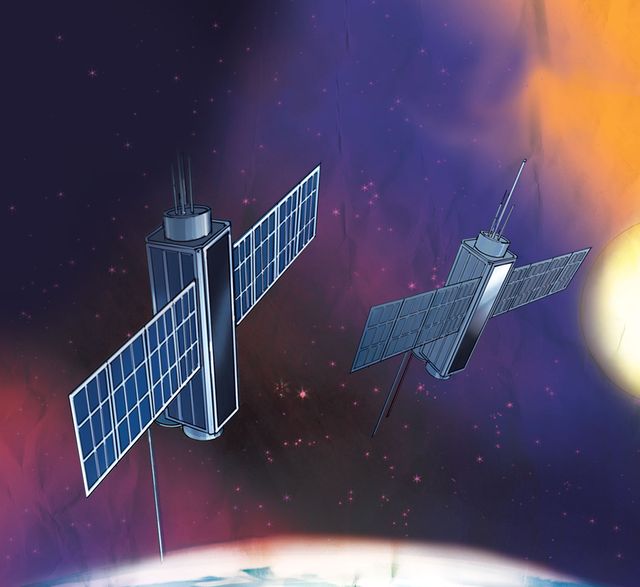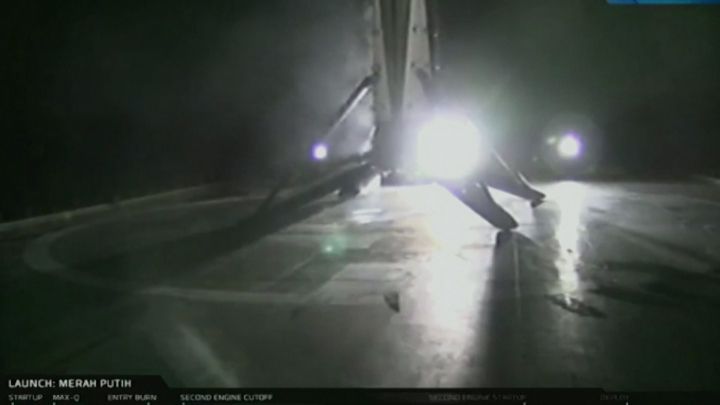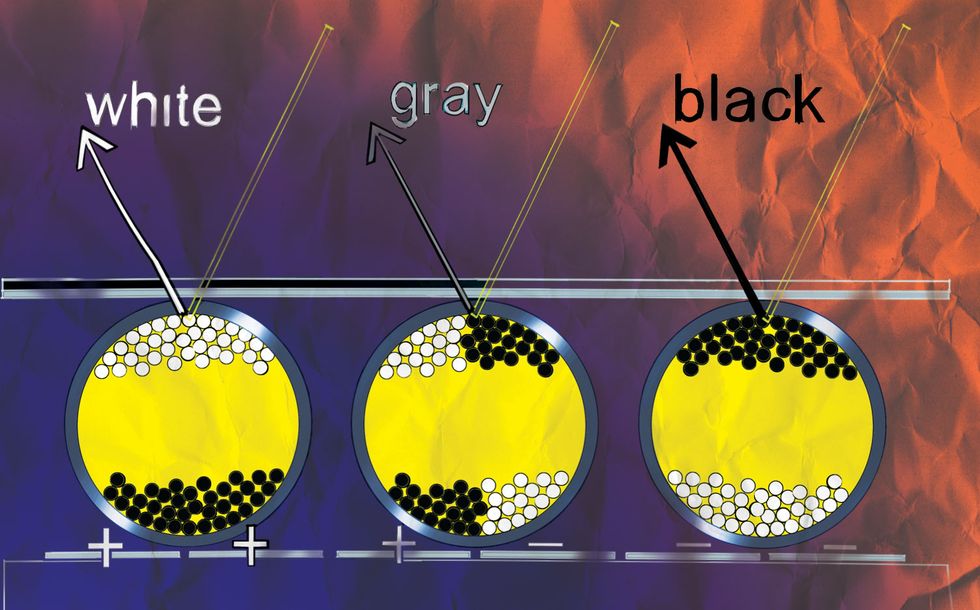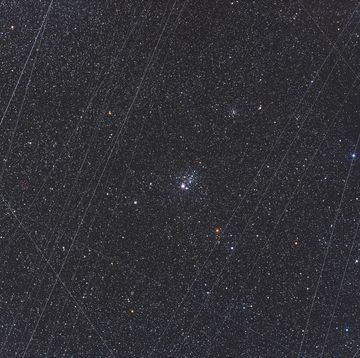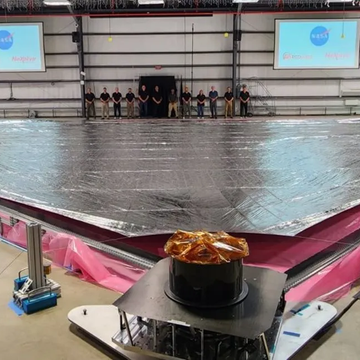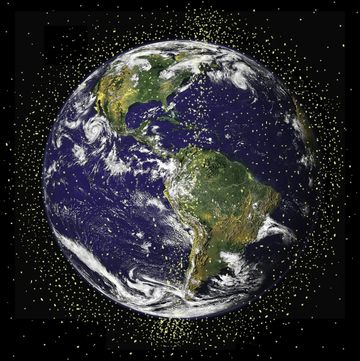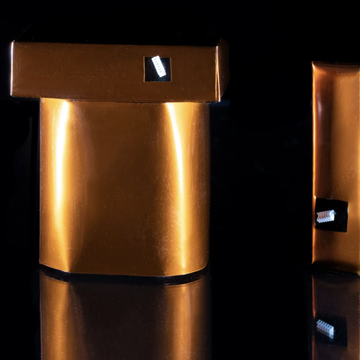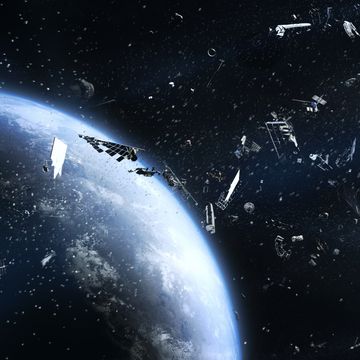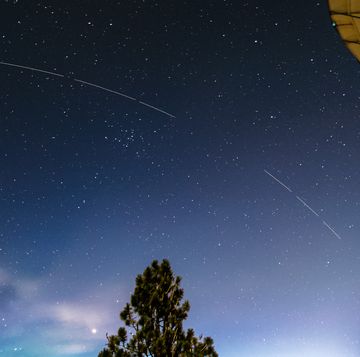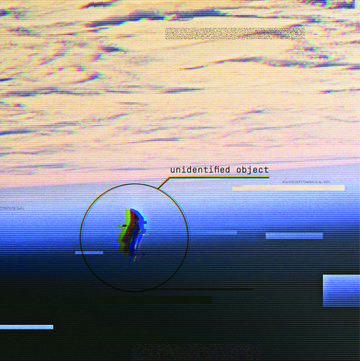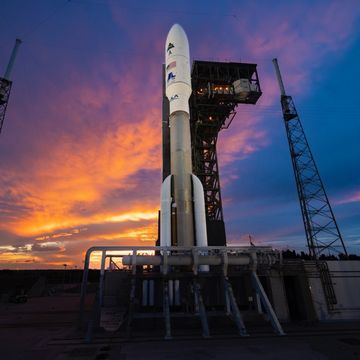I have a weird idea. I want to put a Kindle in space. Not literally (or for literature)—instead, I want to take the technology of a Kindle’s E Ink screen and put it on the side of a spacecraft to help control temperature and maybe even do some basic navigation. It might be crazy. It could be brilliant. But space is tough.
Satellites cost tens to hundreds of millions of dollars, have to operate for years, and must be reliable, since there’s no way to fix them in space. On top of that, space is notoriously rough on electronics—they have to operate in a vacuum, across a wide range of temperatures, bombarded by radiation. As a result, engineers at places like NASA and SpaceX use a 9-point scale of technology readiness levels (TRL)—9 being the highest—to determine if designs are ready to be deployed. My idea might be, roughly, at TRL 2. But it’s my dream. So what would it take to get it into space?
A brief detour to the concept: Color is important for spacecraft. The typical reflective gold and white materials used are designed to reduce heat absorption by reflecting light. Dark colors absorb more heat. (Think of a black car seat on a summer day.) There are more drastic measures for heat control, like radiators and mechanical louvers, but they have downsides: If a radiator sees the sun directly, it’ll take in too much heat. Mechanical louvers are moving parts that can fail. So what if you could change the color of various surfaces mid-mission, using a tiny amount of energy? Which brings me to E Ink. The “ink” of an E Ink page is a tiny sphere with white on one side and black on the other. With a small amount of electricity, you can swap colors, and they’ll stay put. (Which is why a Kindle consumes so much less power than your phone.) For very little energy cost, you could switch a satellite’s early-mission sun-shielding paint job to a heat-absorbing one at planets farther out.
It only gets more interesting from there. When the light from the sun hits the surface of a spacecraft, it imparts a small momentum. If the energy is absorbed as heat, it’s less than if the light is reflected. That’s the idea behind a solar sail, like the ones in the Planetary Society’s LightSail and LightSail 2 missions. Those missions use a very thin Mylar sheet to reflect light, allowing them to gain momentum and rise into orbit. It’s very economical, and similar technologies have been proposed for interstellar travel to neighboring star systems, since they would never run out of fuel. Our Kindle-craft could use the same principle: Turn light to go forward. By turning part light and part dark so one area would see more force than the other, we might even be able to steer.
So how do we get from this concept to Kindle-craft One? That’s what the TRLs are for. At the low end are things that are largely conceptual and may not be possible. Think warp drive. By TRL 8, a working idea on Earth is tested in space or simulated space. We’re starting with a little bit of hardware—a Kindle—but we have a ways to go to get it flight-ready. The next step would be to prove it’s feasible. First, we can research whether this would fail in space: Would Earth’s magnetic field affect our ability to change colors? Would radiation damage the parts? We would also want to figure out if E Ink provides benefits over existing designs, like in weight or cost. If it passes muster, we can start work on an electronics board made of space-safe parts. It doesn’t have to be exactly like what would fly, but it has to consist of all the right components. Now at TRL 4 or 5, we can move on to the simulated space environment.
If we’re able to get Kindle-craft One through all these steps, it’s time to try it in space. Fifteen years ago, that would have required resources beyond most people. Today, with relatively cheap CubeSats, it’s totally doable. This is the approach of LightSail 2—deploying the solar sail via CubeSat to prove it for large satellites.
Developing technology for space today is both easier and harder than it should be. It takes less capital than it used to, but if there’s one thing that’s frustrating about the TRL system, it’s that the professionals typically pick high-TRL items when they’re developing new projects. It’s pragmatic: A lot of ideas won’t make it past the first few TRLs—space is hard. This might be why space technologies like freeze-dried food work their way from orbit down to our kitchens, but the process rarely goes in the opposite direction. But surely we’ve got incredible things down here that would make an impact up there.
What a Space Kindle Could Do
Imagine a CubeSat with an E Ink panel that can toggle its pixels between black and white. White pixels, which reflect light, get a small amount of momentum when hit by sunlight. Black pixels, which absorb light, get some momentum, but less. Therefore, a panel split vertically between white and black gets greater force pushing its top than its bottom, rotating it about its center of gravity and reorienting it in orbit—without using thrusters or fuel. Once reoriented—and farther from the sun—the panel could be turned black to absorb more heat and keep its instruments in their operable temperature range.
How E Ink Works
An E Ink pixel contains electrically charged white (+) and black (–) capsules and sits on an electrode. When the electrode is given a charge, it repels one set of capsules, pushing them to the panel’s surface, changing its color.
This appears in the September 2018 issue. Want more Popular Mechanics? Get Instant Access!
Bobak Ferdowsi is an engineer at NASA's Jet Propulsion Laboratory who helped land the Curiosity rover. Views are his own and not endorsed by his employer.
